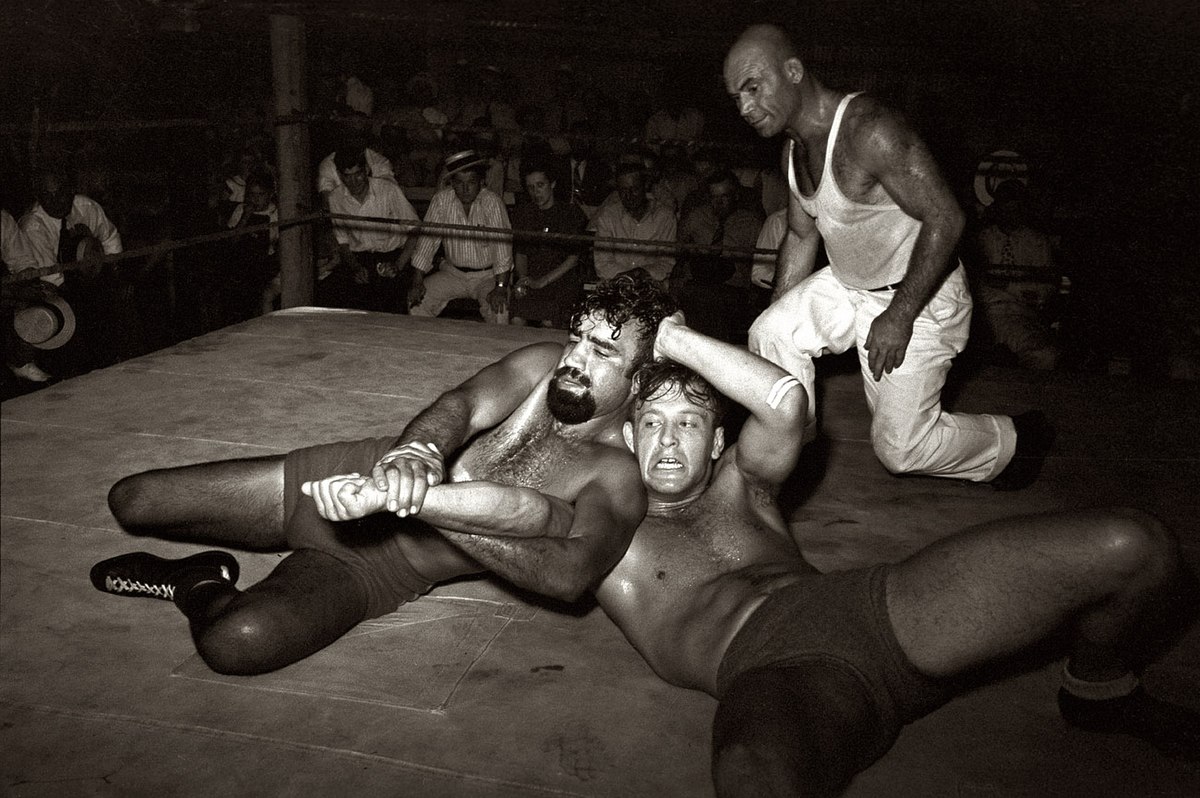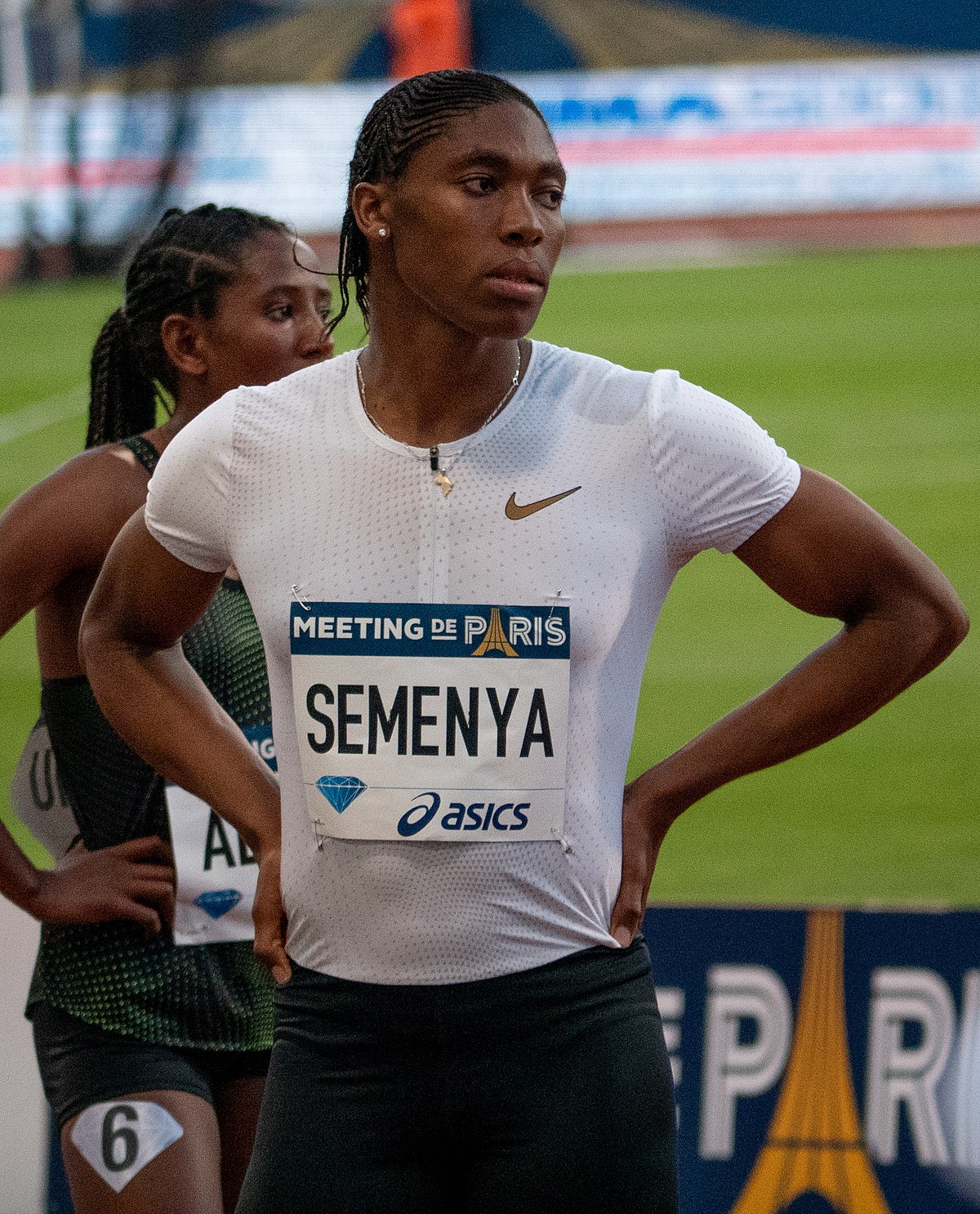Caster Semenya went through a similar series of questions regarding her gender:
Caster Semenya
Mokgadi Caster Semenya OIB (born 7 January 1991) is a South African
middle-distance runner and winner of two
Olympic gold medals[4] and three
World Championships in the women's
800 metres. She first won gold at the World Championships
in 2009 and went on to win at the
2016 Olympics and the
2017 World Championships, where she also won a bronze medal in the
1500 metres. After the
doping disqualification of
Mariya Savinova, she was also awarded gold medals for the
2011 World Championships and the
2012 Olympics.[5][6][7]
Following Semenya's victory at the 2009 World Championships, she was made to undergo
sex testing, and cleared to return to competition the following year.[8][9] The decision to perform sex testing sparked controversy in the sporting world and in Semenya's home country of
South Africa. Later reports disclosed that Semenya has the
intersex condition
5α-reductase 2 deficiency and natural
testosterone levels in the typical male range.[10][11]
In 2019, new
World Athletics rules came into force preventing athletes like Semenya with certain
disorders of sex development (DSDs) from participating in
400m,
800m, and
1500m events in the female classification, unless they take medication to suppress their testosterone levels. Semenya has filed a series of legal cases to restore her ability to compete in these events without testosterone suppression, arguing that the World Athletics rules are discriminatory.[12]
Early life and education
Semenya was born in Ga-Masehlong, a village in South Africa near
Polokwane, and grew up in the village of Fairlie in South Africa's northern
Limpopoprovince. She has three sisters and a brother.[13][14]
Semenya attended Nthema Secondary School and the
University of North Westas a
sports science student.[15][16] She began running as training for
association football.[17]
Intersex condition
Although Semenya was
assigned female at birth,[18][19] she has the
intersexcondition
5α-Reductase 2 deficiency (5-ARD).[10][11][18] This condition only affects genetic males with
XY chromosomes. Individuals with 5-ARD have normal male internal structures that are not fully
masculinised during the
development of the reproductive system in utero, due to low levels of the hormone
dihydrotestosterone (DHT). As a result, the external
genitalia may appear ambiguous or female at birth.[20][21][22]
Semenya has said that she was born with a
vagina and internal
undescended testes, but that she has no
uterus or
fallopian tubes and does not
menstruate.[11][23][24] Her internal testes produce natural
testosterone levels in the typical male range.[11][25] Semenya has rejected the label of "intersex", calling herself "a different kind of woman."[25]
…
Legal cases against World Athletics
In June 2018, Semenya announced that she would legally challenge the IAAF rules, calling them "discriminatory, irrational, [and] unjustifiable".[106] She claimed that testosterone-suppressing medication, which she had taken from 2010 to 2015, had made her feel "constantly sick" and caused her abdominal pain, and that the IAAF had used her as a "guinea pig" to test the medication's effects.[107]
The case divided legal and scientific commentators.
Duke Law Schoolprofessor and former middle-distance runner
Doriane Lambelet Colemanargued that the organization's rules guaranteed a "protected space" for female athletes. Physician and genetics researcher
Eric Vilain argued in favor of Semenya, claiming that "sex is not defined by one particular parameter... it's so difficult to exclude women who've always lived their entire lives as women."[108]During the proceedings, the IAAF clarified that the regulations would only apply to DSD athletes with
XY chromosomes.[98][109]
In May 2019, the
Court of Arbitration for Sport rejected Semenya's challenge in a 2–1 decision, paving the way for the new rules to come into effect. Although the CAS agreed with Semenya that the rules were discriminatory, it concluded that this discrimination was "a necessary, reasonable and proportionate means of achieving the IAAF's aim of preserving the integrity of female athletics".[110][111]
That same month, Semenya appealed the decision to the
Federal Supreme Court of Switzerland. The court provisionally suspended the World Athletics rules while deciding whether to issue an
interlocutory injunction in June.[112]However, this decision was reversed in July, leaving Semenya unable to compete in World Athletics races between 400m and one mile while her appeal continued.[113]
The Swiss supreme court ultimately dismissed Semenya's appeal in September 2020. In its decision, the court affirmed that the CAS had the right to uphold World Athletics' rules "in order to guarantee fair competition for certain running disciplines in female athletics."[114] The court also declared that because Semenya was "free to refuse treatment to lower testosterone levels," her "guarantee of human dignity" was not violated.[115]
In February 2021, Semenya again appealed the case to the
European Court of Human Rights.[116] In March 2023, World Athletics made its rules for Semenya and other DSD athletes even more restrictive, requiring them to lower their testosterone levels below a threshold of 2.5 nmol/L for at least 24 months before competing.[117]
The ECHR ruled in Semenya's favor in a 4–3 decision in July 2023, finding that the competition rules had discriminated against her and infringed on her human rights. However, the decision did not overturn the rules themselves, and World Athletics stated that the regulations would "remain in place."[118]
After a request from the Swiss government, Semenya's case was referred to the ECHR's Grand Chamber in November 2023 for a final ruling.[119]

en.wikipedia.org

decripto.org











